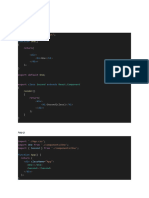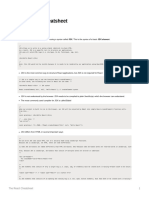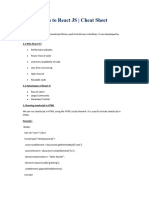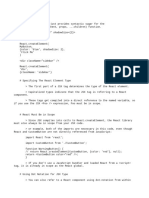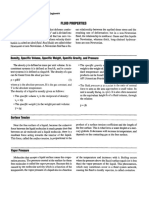0% found this document useful (0 votes)
29 views14 pagesReact
The document provides an overview of React, focusing on creating Single Page Applications (SPAs) using components, JSX, and props. It covers various topics such as importing files, conditional rendering, handling events, and using React Hooks for state management. Additionally, it includes examples of components, prop types, and rendering arrays, emphasizing best practices in React development.
Uploaded by
lods141Copyright
© © All Rights Reserved
We take content rights seriously. If you suspect this is your content, claim it here.
Available Formats
Download as PDF, TXT or read online on Scribd
0% found this document useful (0 votes)
29 views14 pagesReact
The document provides an overview of React, focusing on creating Single Page Applications (SPAs) using components, JSX, and props. It covers various topics such as importing files, conditional rendering, handling events, and using React Hooks for state management. Additionally, it includes examples of components, prop types, and rendering arrays, emphasizing best practices in React development.
Uploaded by
lods141Copyright
© © All Rights Reserved
We take content rights seriously. If you suspect this is your content, claim it here.
Available Formats
Download as PDF, TXT or read online on Scribd
/ 14












